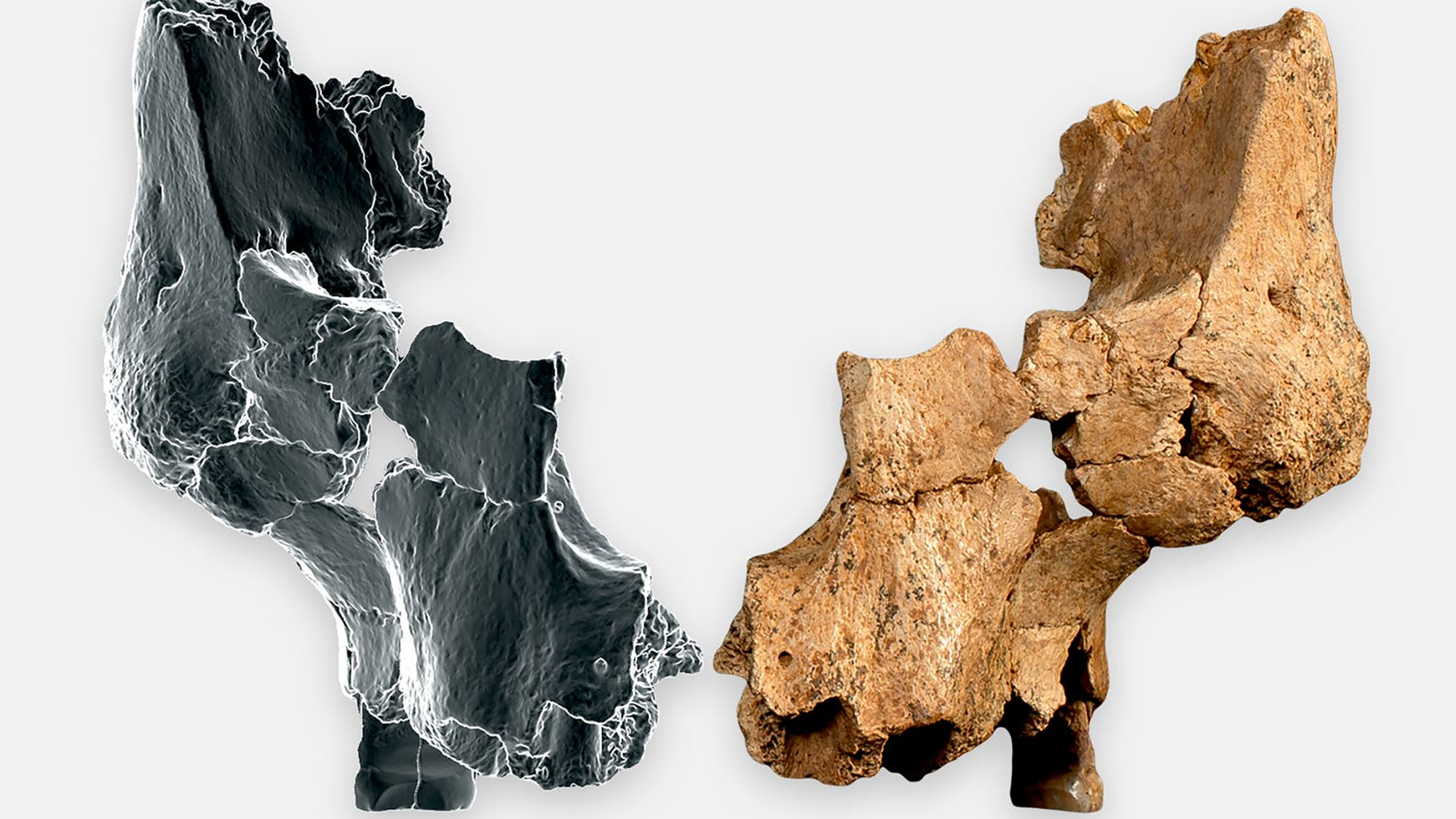Hoover's unsustainable century
- USA, November 24, 1922. The Hoover Commitment was signed and the commission was created to build a dam along the Colorado River, on the border of the states of Arizona and Nevada. The pharaonic work of the Hoover dam was the beginning of a water management model that ended in 1936 and spread in the twentieth century.

Every year, when snow in the Rocky Mountains of the United States melted, the Colorado River overflowed, endangering the area’s crops. In addition to preventing flooding, a dam would expand irrigation in arid areas, supply water to other communities in Los Angeles and Southern California, produce electricity… With this idea, the Hoover commitment was signed in 1922 to make dam.
The prey was initially named Boulder, but in the negotiations was Trade Secretary Herbert Hoover, who would later be President of the United States, who finally, like the convention, called Hoover.
President Coolidge, six years later, in 1928, legally accepted the project, but the official authorization to start construction works was obtained in 1930, presided over by Hoover, ignoring the crisis that broke out the previous year or, in a way, under the excuse of the Great Depression, arguing that these works would alleviate the situation. Thus, in 1933 another giant hydraulic project was launched and the Tennessee Valley Authority was created to exploit the waters of the river of the same name.
Boccaletti considers that the history of water is not technological, but political, although the model that has spread in the twentieth century has a technological base.
The pharaonic work of the Hoover dam was completed in 1936 with 3.33 million m³ of concrete and 49 million dollars (approximately 900 million today).
But perhaps the adjective “Pharaonic” is not the most appropriate to speak of the Hoover dam; although the Egyptians used the fluctuations of the Nile River, current water management policies have their origin in ancient Rome. This is what Water says by researcher Giulio Boccaletti. A Biography (Water. A biography) in a paper that gathers the history of water management.
Boccaletti considers that the history of water is not technological, but political, although the model that has spread in the twentieth century has a technological base. This model, based on major engineering projects, was born in the United States through Hoover and Tennessee and spread throughout the world. From Boccalet it is known as the “hydraulic century” in the last hundred years.
He believes that this paradigm is about to run out and that the future model can come from China. The researcher states that the water management system remains unknown, but it is clear that the path opened 100 years ago by the Hoover dam is not sustainable.
Guardia Zibilaren historia bat - Hemendik alde egiteko arrazoiak izenburupean, datorren astean argitaratuko dugun 305. LARRUN aldizkariaren pasarte batzuk dira ondorengoak, erakunde armatuaren sorrera garaietan girotutakoak.
Iazko uztailean, ARGIAren 2.880. zenbakiko orrialdeotan genuen Bego Ariznabarreta Orbea. Bere aitaren gudaritzaz ari zen, eta 1936ko Gerra Zibilean lagun egindako Aking Chan, Xangai brigadista txinatarraz ere mintzatu zitzaigun. Oraindik orain, berriz, Gasteizen hartu ditu... [+]
Aranzadi Zientzia Elkarteko Etnografia Sailaren zuzendari berria da Maite Errarte Zurutuza (Beasain, 1995), urrian Fermin Leizaolaren lekukoa hartu ondoren. Kultura materiala aztertzen jarraitzeko beharra azpimarratu du, gizartearen memoria eta bizimodu aldaketak erregistratzeko... [+]
Eskultura grekoerromatarrek bere garaian zuten itxurak ez du zerikusirik gaurkoarekin. Erabilitako materiala ez zuten bistan uzten. Orain badakigu kolore biziz margotzen zituztela eta jantziak eta apaingarriak ere eransten zizkietela. Bada, Cecilie Brøns Harvard... [+]
Japonia, XV. mendea. Espioitzan eta hilketa ezkutuetan espezializatutako eliteko talde militarra sortu zen. Edo horixe uste du behintzat Stephen Turnbull historialari britainiarrak. Beste aditu batzuen ustez, askoz lehenago sortu ziren ninjak, duela 2.300-2.500 urte inguru. Eta... [+]
Gogora Institutuak 1936ko Gerrako biktimen inguruan egindako txostenean "erreketeak, falangistak, Kondor Legioko hegazkinlari alemaniar naziak eta faxista italiarrak" ageri direla salatu du Intxorta 1937 elkarteak, eta izen horiek kentzeko eskatu du. Maria Jesus San Jose... [+]
Familiak eskatu bezala, aurten Angel oroitzeko ekitaldia lore-eskaintza txiki bat izan da, Martin Azpilikueta kalean oroitarazten duen plakaren ondoan. 21 urte geroago, Angel jada biktima-estatus ofizialarekin gogoratzen dute.
Atapuercako aztarnategian hominido zahar baten aurpegi-hezur zatiak aurkitu dituzte. Homo affinis erectus bezala sailkatu dute giza-espezieen artean, eta gure arbasoek Afrikatik kanpora egindako lehen migrazioei buruzko teoriak irauli ditzake, adituen arabera.
Chão de Lamas-eko zilarrezko objektu sorta 1913an topatu zuten Coimbran (Portugal). Objektu horien artean zeltiar jatorriko zilarrezko bi ilargi zeuden. Bi ilargiak apaingarri hutsak zirela uste izan dute orain arte. Baina, berriki, adituek ilargietan egin zituzten motibo... [+]
Hertfordshire (Ingalaterra), 1543. Henrike VIII.a erregearen eta Ana Bolenaren alaba Elisabet hil omen zen Hatfield jauregian, 10 urte besterik ez zituela, sukarrak jota hainbat aste eman ondoren. Kat Ashley eta Thomas Parry zaintzaileek, izututa, irtenbide bitxia topatu omen... [+]
Urte bat beteko da laster Pazifikoko Kanaky herriko matxinada eta estatu-errepresiotik. Maiatzaren 14an gogortu zen giroa, kanaken bizian –baita deskolonizazio prozesuan ere– eraginen lukeen lege proiektu bat bozkatu zutelako Paristik. Hamar hilabete pasa direla,... [+]
Kanakyko Gobernuko kide gisa edo Parisekilako elkarrizketa-mahaiko kide gisa hitz egin zezakeen, baina argi utzi digu FLNKS Askatasun Nazionalerako Fronte Sozialista Kanakaren kanpo harremanen idazkari gisa mintzatuko zitzaigula. Hitz bakoitzak duelako bere pisua eta ondorena,... [+]
Hiru bideo dira (albiste barruan ikusgai). Batak jasotzen du, grebak antolatzea leporatuta, Carabanchelen espetxeratu zituzten Jesús Fernandez Naves, Imanol Olabarria eta Juanjo San Sebastián langileak espetxetik atera ziren unea, 1976ko abuztuan. Beste biak Martxoak... [+]























